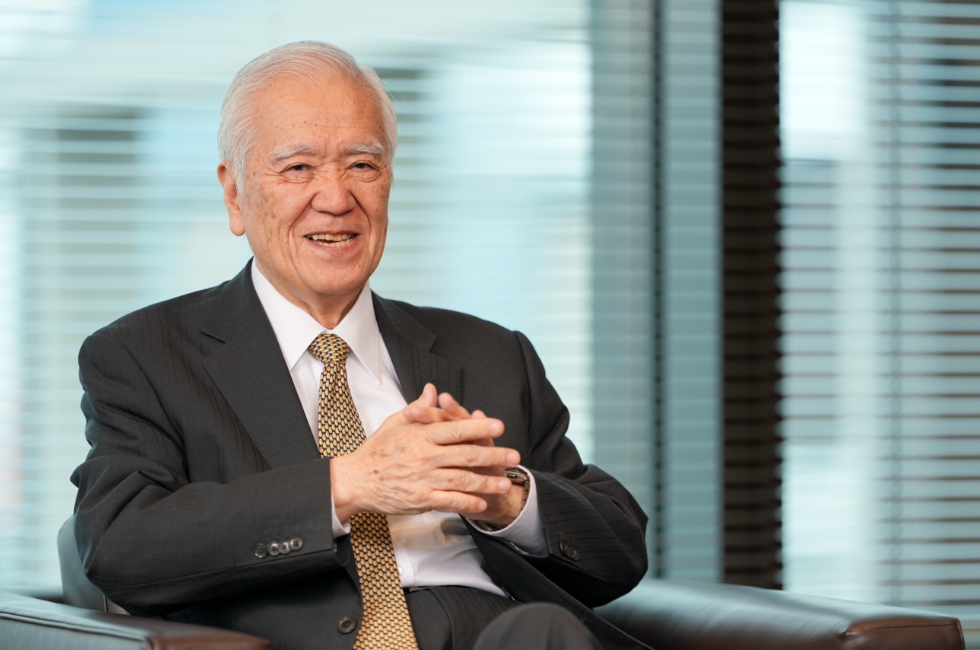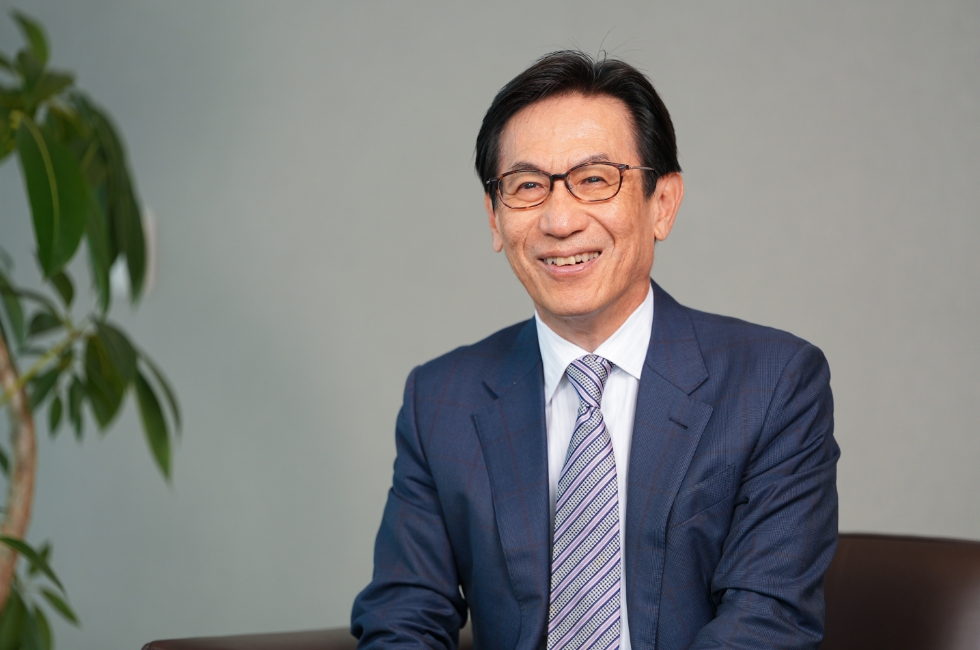A Dialogue between Outside Directors

A hybrid of strong leadership and systematic management to ensure long-term growth
Hiroshi Watanabe
Nominating Committee Member (Chairperson)
Compensation Committee Member
Joined the Ministry of Finance (currently the Ministry of finance Japan) in 1972. After serving as Director-General of the International Bureau and Vice Minister of Finance for International Affairs, retired in 2007.
Subsequently held positions including Professor, Graduate School of Commerce and Management at Hitotsubashi University (currently Graduate School of Business Administration at HItotsubashi University); Governor, Japan Bank for International Cooperation; and President, Institute for International Monetary Affairs. Appointed Director of ORIX Corporation in June 2020.
Chikatomo Hodo
Compensation Committee Member (Chairperson)
Nominating Committee Member
Joined Arthur Andersen & Co. (currently Accenture Japan Ltd.) in 1982. Appointed Representative Director and President, Accenture Japan Ltd., in 2006. Since 2015, has contributed to the company’s growth as Director and Chairman and Senior Corporate Advisor. Served as Vice Chairperson of the Japan Association of Corporate Executives from 2017 to 2020. Appointed Director of ORIX Corporation in June 2021.
Evolution to a CEO/COO Structure: Expectations and Initial Results
――It has been six months since Mr. Takahashi assumed the role of COO. How do you view the new management structure?
Hodo: In nominating the COO, we outside directors were deeply involved through the Nomination Committee, engaging in thorough, multifaceted discussions over an extended period. We carefully considered a wide range of factors, including not only the qualities required of a leader but also whether the individual could foster harmony , including from a succession planning perspective, across the organization and drive the company to the next stage of growth.
Watanabe: One of the reasons we selected Mr. Takahashi as President and COO was his extensive knowledge and experience in areas that ORIX will focus on in the future, such as overseas operations and energy and environmental services. We also took into account the need to rejuvenate the management. Six months have passed since his appointment, and it appears that a clear division of roles has been established, with Mr. Inoue, the CEO, overseeing the overall management as Chairman and Board chair, and Mr. Takahashi, the COO, leading operations and execution.
Hodo: ORIX has a long history of a strong leader driving the company forward. However, with the appointment of the new COO, we can say that a transformation toward more systematic management has begun. Combining the strength of leadership akin to an owner-led company with the governance and discipline of a listed company — I believe building this kind of hybrid management structure is crucial. Additionally, Mr. Takahashi himself is taking the lead in updating ORIX’s decision-making mechanisms, which gives me confidence in the company's future.
Long-term Vision and Growth Strategy: Balancing Philosophy and Execution

――How do you view management’s long-term vision and the “ORIX Group Growth Strategy 2035”?
Watanabe: First, the formulation of the ORIX Group Purpose & Culture, which preceded this growth strategy, was not so much about creating something new as it was a process of reaffirming what makes ORIX unique by incorporating the opinions of a wide range of employees, including younger ones. The long-term vision and growth strategy were then formulated based on this reaffirmed corporate purpose. In that sense, I believe it is a strategy that is truly ORIX-like, backed by a sense of realism and execution. In formulating the strategy, we outside directors also actively contributed our opinions at Board meetings and engaged in extensive discussions. Amidst the maturation of the leasing business, which was once a pillar of ORIX’s revenue, and the significant changes in its business structure, we carefully examined areas with growth potential for the future.
Hodo: ORIX started in finance and expanded into investment and business operations. Based on the “real-world perspective” that comes from running various businesses itself (instead of just investing), ORIX has practiced a “project-based” management style, carefully evaluating and selecting individual projects. In this context, clearly articulating a long-term vision based on corporate purpose and outlining a “philosophy-driven” growth strategy is a groundbreaking step for ORIX. Going forward, we believe it is crucial to strike a balance between the “project-driven” and “philosophy-driven” approaches.
Watanabe: Even if we identify growth areas, it is meaningless if they are not properly communicated within the company. The big challenge is how to share the direction of the company's overall strategy while improving communication between departments and avoiding a silo mentality. Each department at ORIX has a perspective that spans the three areas of finance, business, and investment, creating a foundation for frank and open-minded discussions that take a bird's-eye view of the entire organization. I feel that discussions from this perspective have already begun among the management team led by COO Takahashi.
――In the long-term vision, a high target of 15% ROE has been set. What are your thoughts on this?
Watanabe: While it may seem like a high target at first glance, we do not consider it an unrealistic figure. In fact, in the new three-year plan, we have set a target of 11% as a first step, and we believe that a step-by-step approach will ultimately lead us to the goal of 15%. We believe that the best approach to improving ROE is to enhance our ability to generate profits. At the same time, while financial businesses such as banking and insurance tend to have structurally low ROE, they have a track record of supporting the overall business during periods of market instability. It is important to take this into consideration as well.
Hodo: That's right. Even if ROE is temporarily low, if a business generates stable profits over the long term, it can be said to contribute to corporate value. It is important to look at both time frame and capital efficiency. In that sense, it is essential to improve the monitoring skills of the Investment and Credit Committee and Audit Department and build a system that can select projects that will generate sustained value.
Watanabe: What I believe should be prioritized in terms of compensation going forward is a global perspective. In Japanese companies, compensation tends to be determined based on internal standards, and the design does not accurately reflect the “market value” found in the global talent market. Looking ahead to our future overseas expansion, it is imperative for us to be able to offer appropriate compensation at global standards for positions requiring specialized expertise. In addition to executive compensation, I believe it is important to review the overall compensation system, including performance-based compensation and stock-based compensation, and consider a flexible design that aligns with roles and contributions.
Hodo: I believe that compensation systems should be viewed as a strategic mechanism that promotes the growth and cycling of human resources. If we can create a flow in which we produce talented employees who are highly evaluated externally, their achievements will attract both internal and external talent, leading to a virtuous cycling and movement of talent which will strengthen the entire organization.
Watanabe: Unlike the Japanese norm, ORIX has always promoted diverse talent without discriminating based on whether they “grew up” in ORIX or came to ORIX after having started their careers elsewhere. I believe we therefore can serve as a model for flexible system design and talent mobility and lead the transformation of Japanese corporate culture as a whole.
ORIX’s vision of “Finding pathways to impact in a world of change”

――Alongside economic growth, how to add value through addressing societal issues is also a crucial theme. Could you share your thoughts on the role ORIX aims to play moving forward?
Watanabe: I believe that ORIX is a company that can break through existing frameworks and take on new challenges at a time when Japanese companies and society are feeling stagnant. I think that attitude is ORIX's strength and what inspires society. ORIX is neither a zaibatsu*-affiliated company nor a newcomer specializing in a specific field, but rather a unique entity dynamically operating a wide range of businesses, showing the world that “this is another way a company can exist” and “this is another way we can contribute to society”.
Hodo: ORIX’s Purpose states that “We combine innovative thinking and diverse expertise to find pathways to impact in a world of change.” This deeply resonates with me. At ORIX, each employee is committed to meeting specific client needs and challenges, and our talent pool is diverse and each possess unique strengths. While these individuals may not consciously recognize their contributions to societal issues, many of them, including those who have already left ORIX, are making significant impacts across various fields.
――Finally, please share a message for investors.
Hodo: ORIX has grown by finding frontiers and taking risks to enter them. Although the management system has been strengthened, we would like investors to continue to give us their candid opinions and criticisms. ORIX is committed to listening and responding to such voices head-on, and is the kind of company whose growth will be enabled through such challenging and rigorous dialogue.
Watanabe: Indeed, the awareness to meet investors' expectations is very strong. On that basis, once decisions are made through thorough discussions, there is a culture of ensuring they are implemented across the entire organization. As outside directors, we aim to increase opportunities for direct dialogue between us and investors and thereby incorporate diverse opinions into Board discussions. We look forward to your continued candid feedback.
* Zaibatsu were large, family-controlled Japanese industrial and financial conglomerates that dominated the Japanese economy from the Meiji period until the end of World War II.